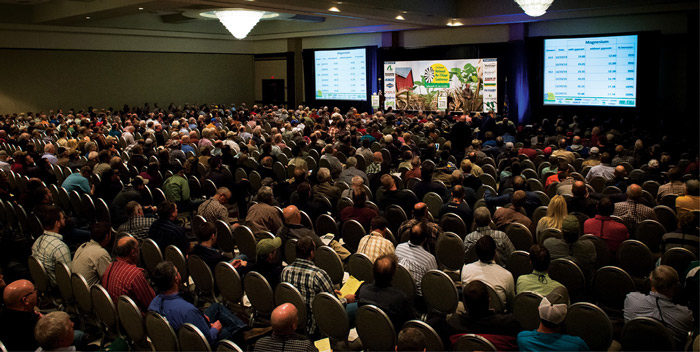No-Till Farmer
Get full access NOW to the most comprehensive, powerful and easy-to-use online resource for no-tillage practices. Just one good idea will pay for your subscription hundreds of times over.

By No-Till Farmer Staff
MORE THAN 1,000 no-tillers from seven countries gathered in the Crossroads of America this January to learn from some of the most experienced no-tillers and respected experts at the 2016 National No-Tillage Conference.
Attendance in Indianapolis clocked in at 1,030 attendees, the second highest showing in the conference’s 24 years and just behind the 1,153 attendees in Indianapolis in 2013. There were 327 first-time attendees.
The staff of No-Till Farmer gathered some of the best no-till tips and insights gleaned from the 16 general sessions and 29 classrooms that were presented over the course of 4 days. The conference’s 25th anniversary is slated for Jan. 10-13, 2017, in St. Louis.
Earthworms are giving no-tillers twice as much soil they can draw water from, Doral Kemper says.
The retired soil researcher from the USDA’s Agricultural Research Service explains that crop roots can follow earthworms’ holes, allowing them to go twice as deep to recover water, noting that 33% more water enters a no-till field than tilled fields, thanks to the soil animal.

|
| PRESCRIPTIVE FARMING. Ohio State University ag engineer John Fulton estimates that about 70% of farm acres are touched by precision farming practices, but only 15% apply precision data to make better on-farm decisions. |
Kemper shared an experiment conducted in Oshkosh, Wis., where researchers looked at corncob sizes between a no-tilled and tilled field across the road from each other. They noticed the circumference of the corncobs in the no-tilled field grew…